Ah the holidays – that magical fortnight where time seems to slow down and all of life’s worries are cast aside. Friends and family come together, meals are prepared, parties are thrown, and diets are thrown out the window! Whether it’s an excess of food, an excess of drink, a lack of exercise, or, more likely, a combination of all three, the festive season takes its toll on our bodies every single year. And the gym programme gets thrown out of the window!
For able-bodied people, putting on a few festive pounds and losing a slice of fitness can often be seen as more of a frustrating dent to pride than anything. Going back to the gym in January is as much about looking fit and toned once again as it is about feeling that way… at least it was for me pre-injury! As a wheelchair user however, going back to the gym represents a drive to maintain independence. Our bodies don’t burn off calories as quickly, and our upper limbs and torso can soon lose that vital strength necessary for the likes of transfers and uphill pushes. We go back to the gym because our day to day lives depend on it.
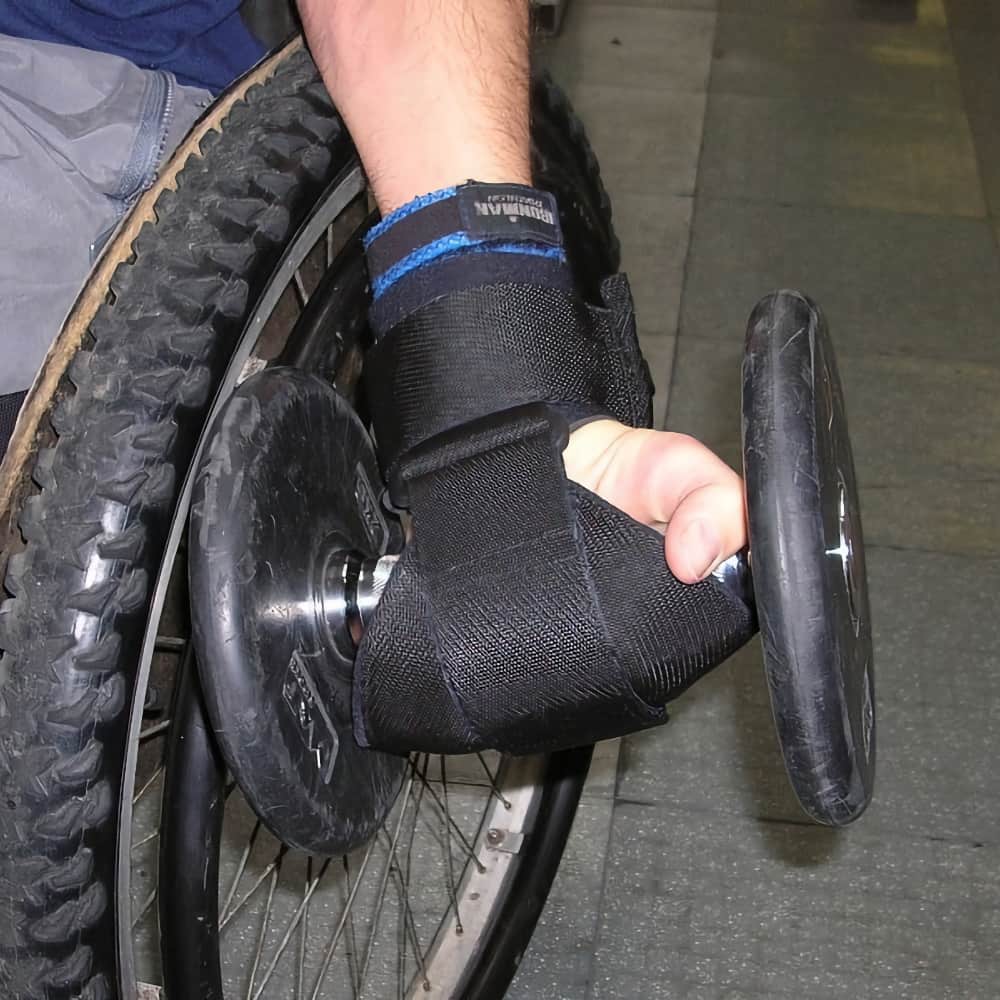
What if there was even more at stake?
What if your career depended on you pushing yourself to not just regain but surpass your previous fitness level? There are a small handful of wheelchair users who will be returning to the gym in January to do just this. They go with one goal in mind: to push themselves into sporting immortality. That’s because 2024 is the year of the Paris Paralympics and they are striving to represent their country.
Jack Smith is one such person. After suffering a high level spinal cord injury whilst playing rugby in 2008, Jack swapped able-bodied rugby for wheelchair rugby. Part of the GB squad who won their historic gold medal at Tokyo in 2021; many would argue he has already reached the mountain top. Having been awarded the MBE for this achievement, he could easily have sat back and rested on his laurels. However, Jack wants more.
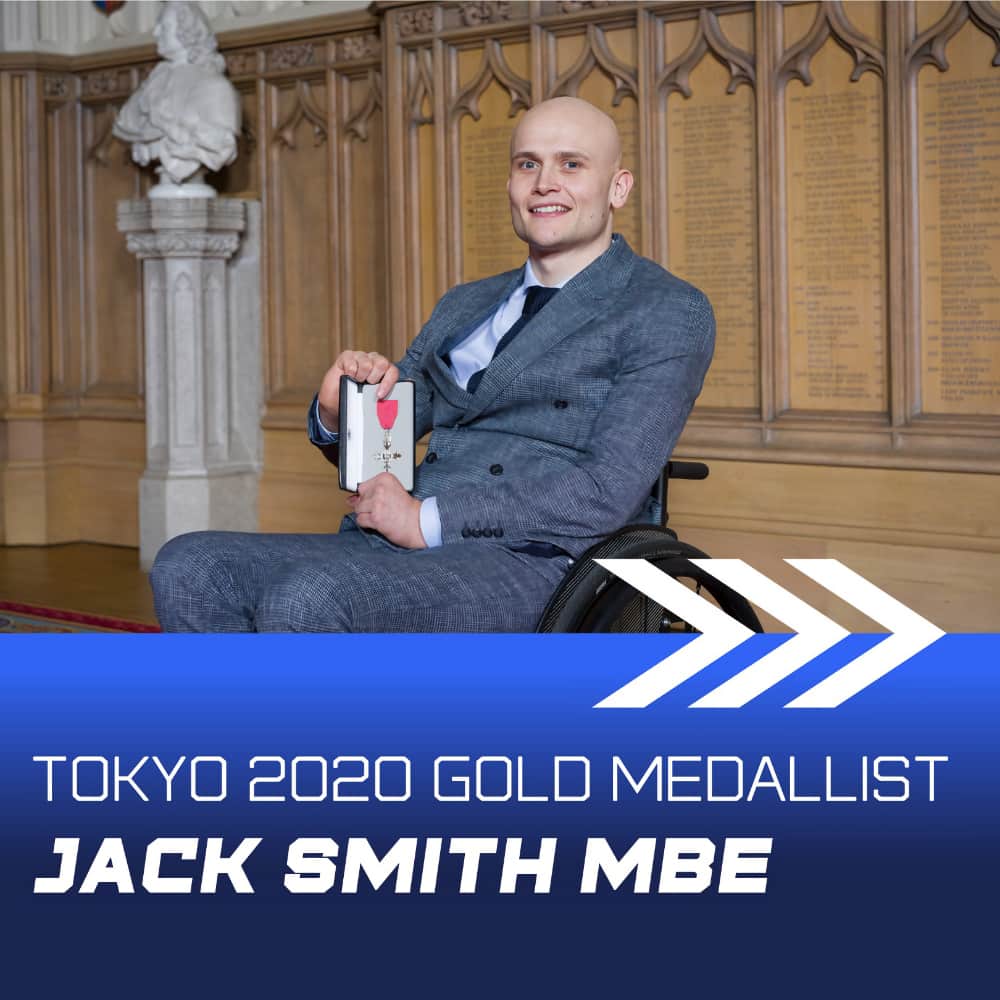
Following a strict regimen of diet and fitness, and having recently been voted the best player in the world in his class, Jack is at the peak of his game right now. Determined to defend the Paralympic title in France later this year, his focus is singular. But Jack is only human, and just like the rest of us, allows himself time off over the holidays to eat, drink and be merry. So just like everyone else, when January rolls round and reality sets back in, it’s time to hit the gym!
A Paralympian’s Gym Programme
But what does a Paralympian’s January gym programme look like? Is it something an everyday wheelchair user can aspire to undertake? I spoke to Jack about this and he kindly agreed to share his training routine with us, including any aids he uses. As a tetraplegic whose injury affects both his arms and hands, gripping aids play an essential part in Jack’s training. Without them, he wouldn’t be able to carry out many of the exercises and his training would be severely limited.
So why not test yourself this January by following Jack’s Paralympic gym programme? It is designed specifically for wheelchair users wanting to focus on their arms, shoulders and upper torso. You may surprise yourself with just how much of it you are able to achieve. No suggested weight sizes or resistance levels are given. Everyone is different and it is important to find a balance that suits you. The main thing is that you’re embracing fitness, getting active and pushing yourself to start the year in the best possible way!
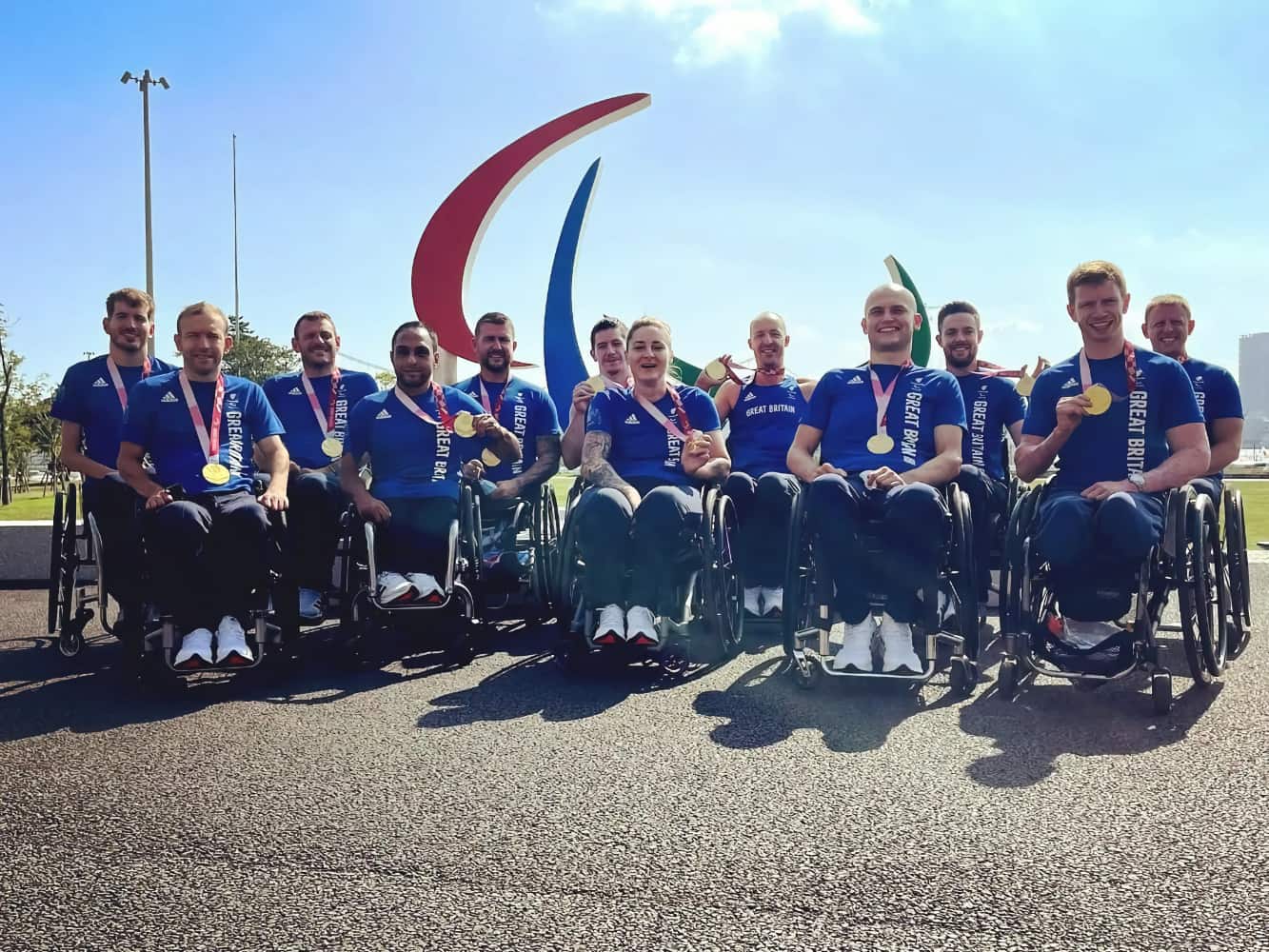
Monday – Ski Erg Machine
5 kilometre time trial using General Purpose Gripping Aids
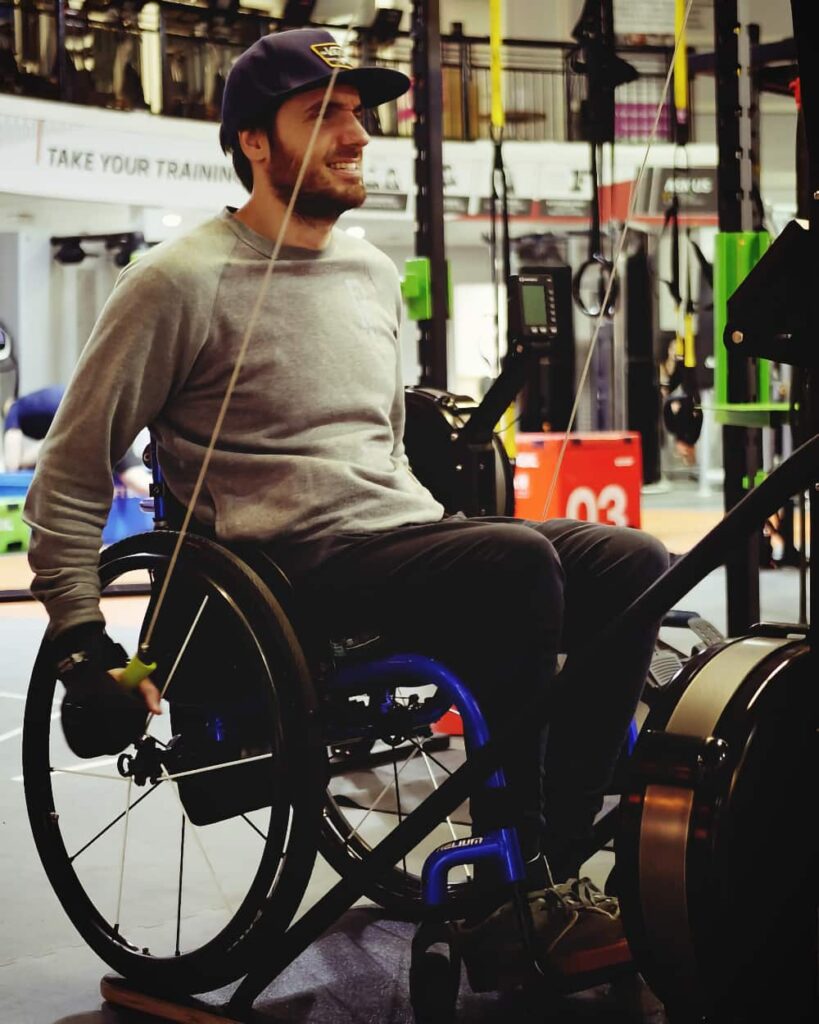
Start off the week by testing your speed over a set distance. See how long it takes you to do 5 kilometres and then push yourself to set a new record each week. If you feel like you’ve reached your absolute limit then work to maintain that level. A great exercise for working on moderate distance stamina.
Tuesday – Gym Programme made up of 3 sets of 10 reps for each exercise
Or do 5 sets of 3 reps if you want to do “heavy lifts”
Bench press using General Purpose Gripping Aids
This exercise is a great way to start a workout. It can be carried out in a number of ways… Lying down on a plinth with your hands strapped to a free weight bar whilst supported by a partner. From a seated position on a bench press machine. Or from your wheelchair using a cable pulley machine.
Medicine ball throw
With a partner, chest pass a medicine ball back and forth to work out those arms and work on your core stability. Make sure your chair is well supported at the back (possibly against a wall) to avoid tipping backwards!
Cable row using General Purpose Gripping Aids or D-Ring Aids
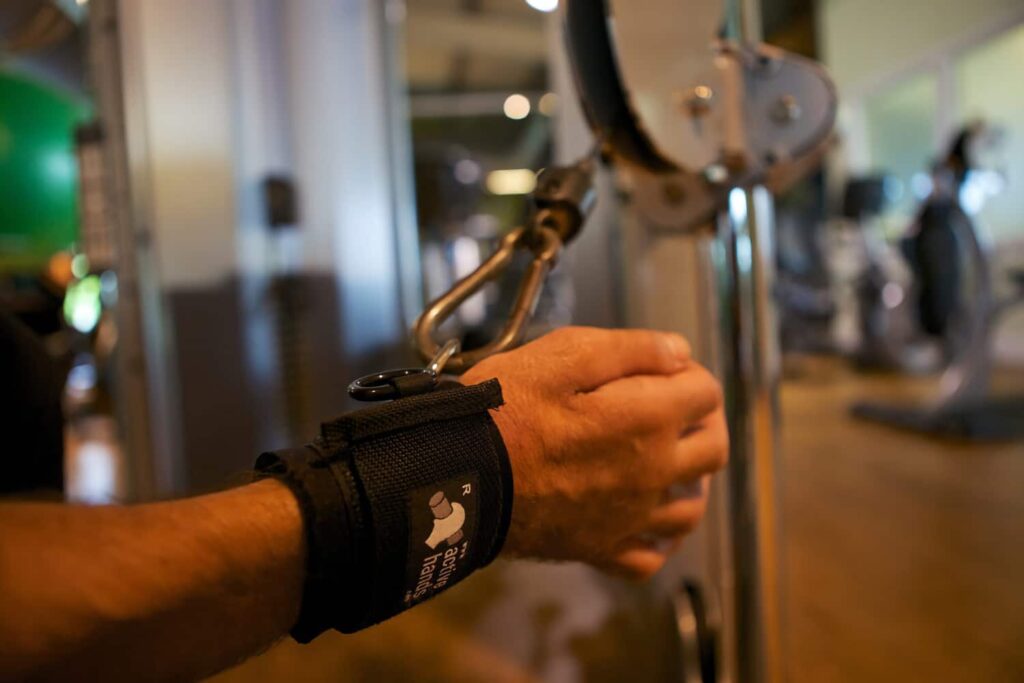
Work each arm individually or both together using the cable pulley machine. Using the D-ring aids you can clip directly onto the carabiner. Then, face the machine and draw your arms back as if pulling an oar through the water. A great exercise for strengthening chair control when on the move.
Bicep curl using General Purpose Gripping Aids
Finish your gym programme off with a classic! Fasten your hand round a dumbbell, let it hang down next to your wheel and then curl it upwards towards your shoulder. Can be carried out one arm at a time or you can grip a weight in each arm and do alternate curls.
Wednesday – Ski erg machine
Interval training using General Purpose Gripping Aids
For this high intensity exercise, Jack adopts a 6×6 approach. That means he works out 6 times, each time for 6 minutes, with a 2 minute rest between reps. This may not seem like a lot at first glance, but putting 100% effort into each rep will soon change your mind! An easy way of burning calories and improving cardio in a time-efficient way.
Thursday – Gym session made up of 3 sets of 10 reps for each exercise
Or perform 5 sets of 3 reps if you want to do “heavy lifts”
Shoulder press using General Purpose Gripping Aids
This exercise involves pushing upwards from your shoulders to above your head. Similarly to the bench press, it can be done either with free weights along with a partner to spot you or by using a machine.
Lat pull down using General Purpose Gripping Aids, Looped Exercise Aids or Hook Aids
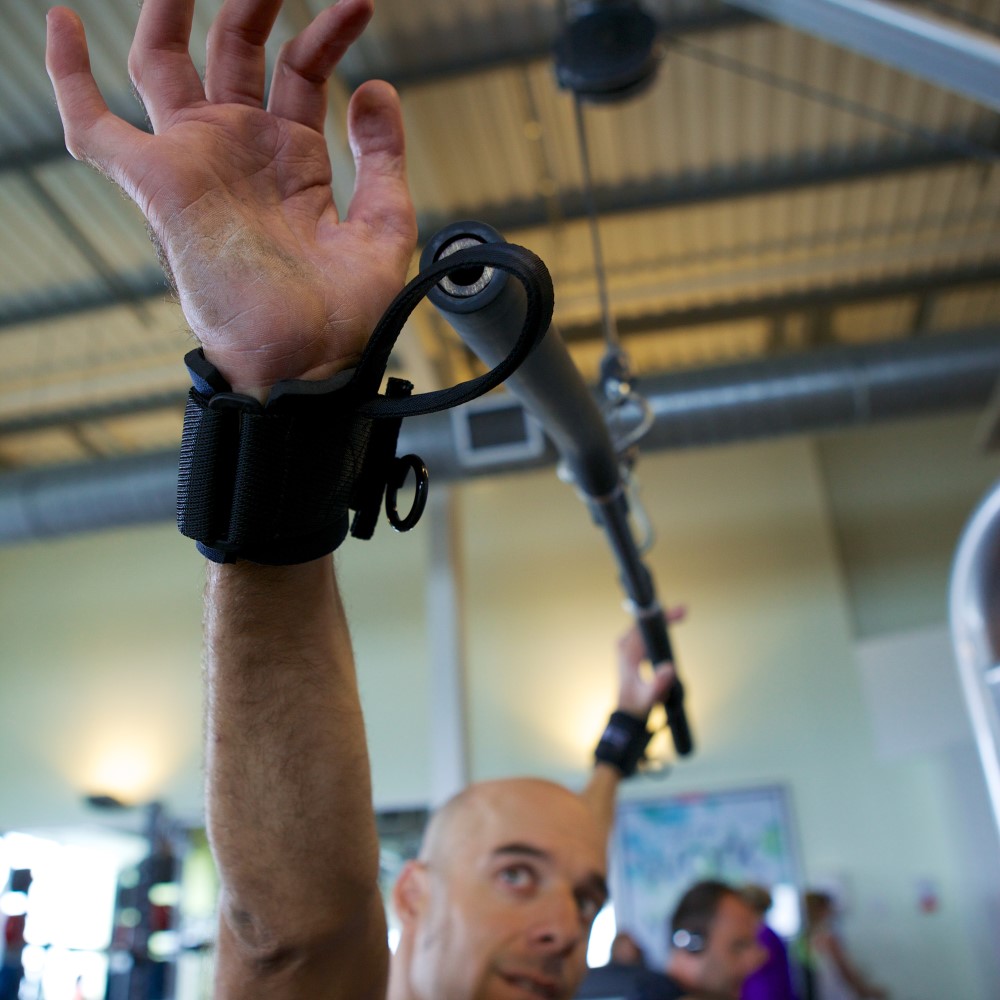
The inverse of the shoulder press, this exercise involves pulling a bar downwards from above your head to just below your neck. Carried out from a seated position, with help from a partner to attach the General Purpose Aids, or independently using either the Looped or Hook Aids.
Overhead medicine ball throw
This exercise is all about explosive power. With a medicine ball held on your lap, lift it up and in one full motion throw it over your head to your partner stood just behind you.
Lateral raises using General Purpose Gripping Aids or D-Ring Aids
An exercise focusing on the deltoid muscles; the lateral raise involves you holding a dumbbell by your side and, with a straight arm, lifting it outwards until it is level with your head. It can also be carried out using a cable pulley machine.
Neck isometrics aka resistance band neck strengthening
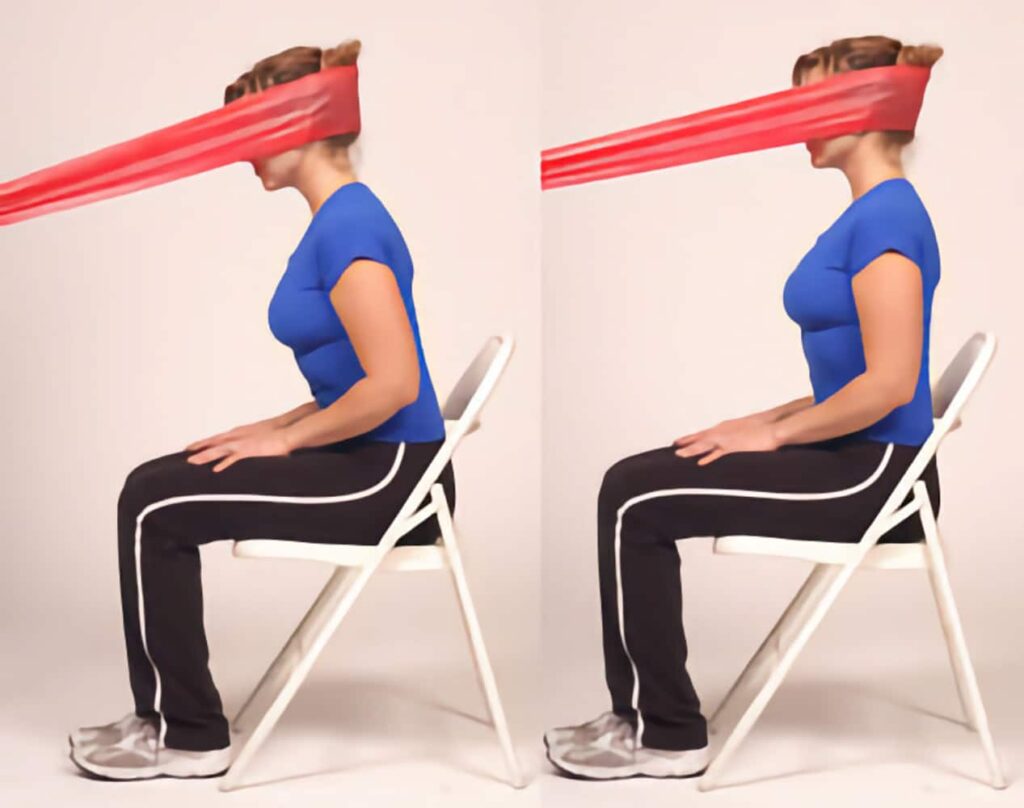
Great for strengthening neck muscles and reducing risk of injury, neck isometrics involve securing a resistance band to a sturdy object, such as a workout machine, at head height level. Then put the opposite end of the band around the top of your head and proceed to lean away from the secured end whilst keeping your neck as straight as possible. Rotate yourself in between sets so you are working on the front, back, left and right of your neck. If you feel like your chair might be in danger of tipping backwards during the frontal stretch then ensure there is something or someone behind you to support it.
Friday – Ski erg machine
30 minute steady recovery session using General Purpose Gripping Aids
It is important that, after a full week of intense workouts, you ease your body into rest and recovery mode. This is why Jack ends his week with 30 minutes of recovery on the ski erg machine; using lighter weights than previously and exercising at a steady 75%. This ensures his body is not only ready for a couple of days rest but also prepared to begin again the following week.
So there we have it – a gym programme worthy of a Paralympian! Some of the exercises listed may not necessarily be accessible to everyone so feel free to substitute others in their place. Let us know what works for you, how you get on and which gripping aids you use!
With all this, plus multiple weekly wheelchair rugby sessions both at club and international level, it’s safe to say that Jack’s plate will be full this January…and not with turkey and stuffing this time!
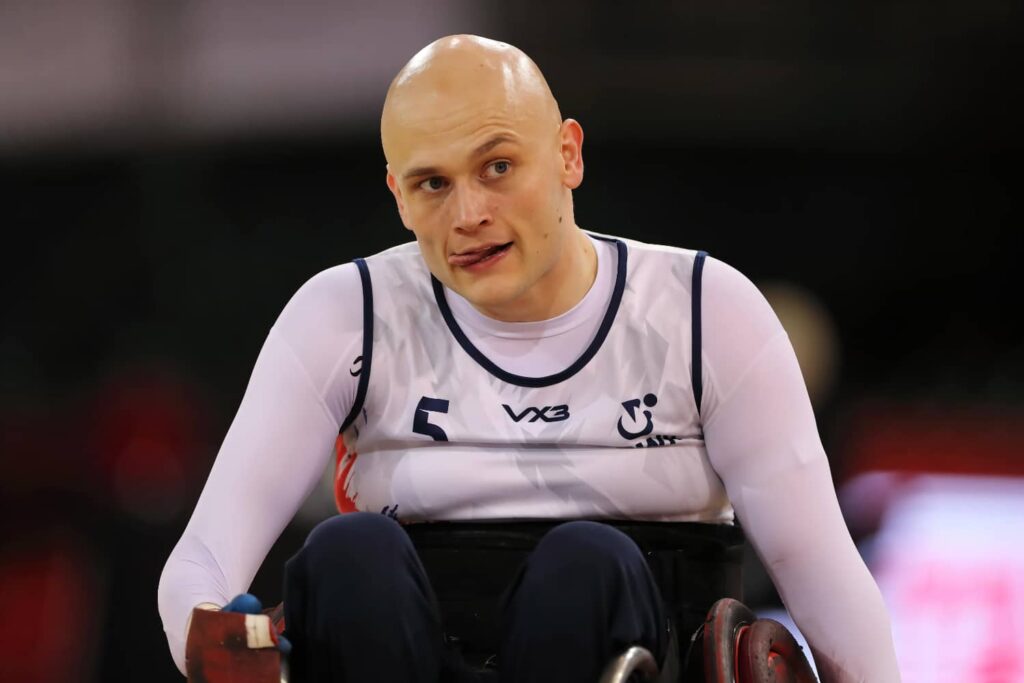
Gareth Herridge
The post The January Gym Paralympic Programme appeared first on The Active Hands Company.